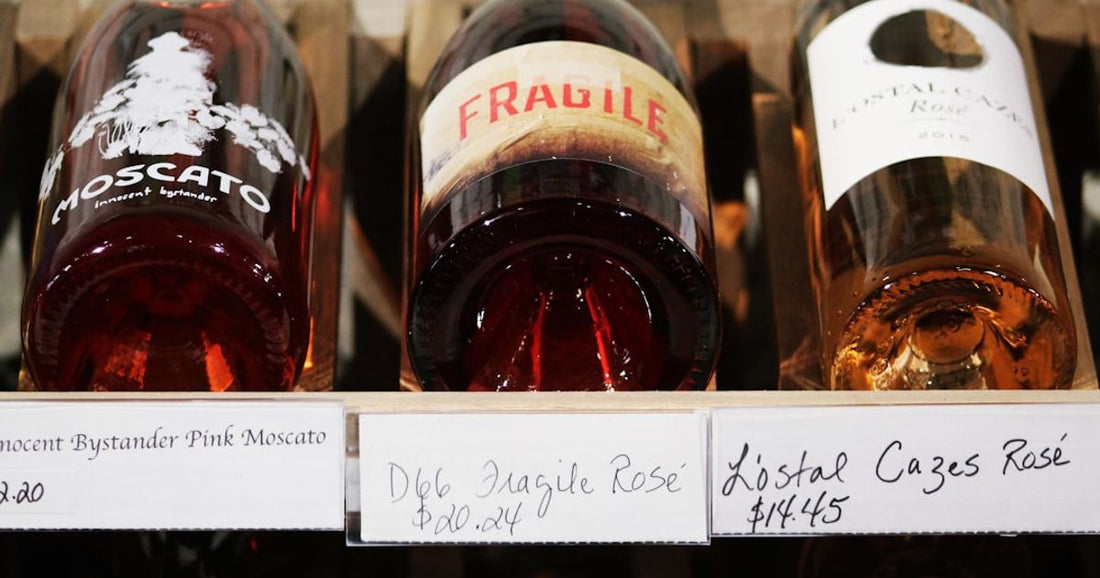
The Role of Winemakers in Managing Vintage Variation
Share
In the heart of Spain's lush vineyards, winemakers face a unique challenge each year: managing the vintage variation. This term refers to the differences in wine quality and characteristics from one year to the next, largely due to changes in weather and climate. Despite these challenges, Spain's winemakers have mastered the art of producing top-quality wines year after year. This blog post delves into the strategies and techniques employed by these skilled artisans to navigate the complexities of vintage variation, ensuring that each bottle of wine reflects the best of what their vineyards have to offer.
Key Takeaways
- Understanding Vintage Variation: Vintage variation refers to the changes in wine characteristics from one year to the next, primarily due to weather conditions.
- Role of Winemakers: Winemakers play a crucial role in managing vintage variation through meticulous vineyard management, harvesting decisions, and winemaking techniques.
- Technological Advances: The use of technology in monitoring vineyard conditions and in the winemaking process helps winemakers adapt to and mitigate the effects of vintage variation.
- Aging and Blending Techniques: Winemakers use aging and blending techniques to maintain consistency in wine quality across different vintages.
- The Importance of Experience: The knowledge and experience of winemakers are invaluable in predicting and reacting to the challenges posed by vintage variation.
Understanding Vintage Variation
Vintage variation is a phenomenon that can significantly impact the taste, aroma, and overall quality of wine. It is primarily influenced by the climatic conditions of a particular year, including temperature, rainfall, and sunshine hours. These environmental factors affect the growth, ripeness, and health of the grapes, which in turn influence the characteristics of the wine produced.
The Impact of Climate on Wine
Climate plays a pivotal role in shaping the characteristics of wine. For instance, warmer years tend to produce wines with higher alcohol content and more robust flavors, while cooler years might result in wines with higher acidity and more subtle flavors. Spain's diverse climatic regions, from the cool, wet northwest to the hot, dry south, add another layer of complexity to managing vintage variation.
The Role of the Vineyard
Winemakers start managing vintage variation long before the grapes are harvested. Decisions made in the vineyard, such as pruning, canopy management, and water management, can influence how grapes respond to the year's climatic conditions. By carefully managing these factors, winemakers can mitigate some of the impacts of adverse weather and ensure the health and ripeness of the grapes.
The Winemaker's Toolbox
Winemakers have a variety of tools and techniques at their disposal to manage vintage variation and produce consistent, high-quality wines year after year.
Harvesting Decisions
One of the most critical decisions a winemaker makes is when to harvest the grapes. This timing can significantly affect the wine's final characteristics. Winemakers closely monitor the grapes' development, tasting them and measuring sugar, acid, and tannin levels to determine the optimal time for harvest.
Technological Advances in Winemaking
The integration of technology into the winemaking process has provided winemakers with valuable tools to combat vintage variation. From satellite imagery to monitor vineyard health to precision fermentation tanks that allow for exact temperature control, technology has revolutionized the way winemakers approach each vintage. Learn more about the role of technology in Spanish winemaking.
Aging and Blending
Aging and blending are two techniques winemakers use to achieve consistency and balance in their wines, regardless of vintage variation. By aging wines in barrels or blending wines from different years, winemakers can smooth out the variations and ensure a consistent product. Discover more about different aging techniques in Spanish wineries.
The Importance of Experience
Perhaps the most critical tool in a winemaker's arsenal is their experience and intuition. Understanding the nuances of their specific vineyards, the typical climatic patterns of their region, and the way different grape varieties respond to environmental changes allows winemakers to make informed decisions throughout the growing season and winemaking process.
Learning from the Past
Experienced winemakers draw on their knowledge of previous vintages to predict and react to the challenges of the current year. By understanding the outcomes of past decisions, they can refine their techniques to better manage future vintage variations.
The Art of Adaptation
The ability to adapt to the unexpected is what distinguishes the best winemakers. Whether it's a sudden heatwave or an unseasonably wet harvest, winemakers must be prepared to adjust their strategies on the fly. This flexibility, combined with a deep understanding of their craft, allows them to produce exceptional wines, even in the most challenging years.
The Future of Managing Vintage Variation
As climate change continues to impact weather patterns globally, managing vintage variation will become increasingly complex. However, with advancements in technology, a deeper understanding of viticulture, and the timeless wisdom passed down through generations, Spain's winemakers are well-equipped to face these challenges head-on.
Embracing Innovation
The future of managing vintage variation lies in the continued adoption of innovative technologies and practices. From precision viticulture to advanced winemaking techniques, embracing innovation will be key to adapting to the changing climate and ensuring the continued production of high-quality wines.
The Importance of Sustainability
Sustainable winemaking practices not only benefit the environment but also help winemakers adapt to and mitigate the effects of vintage variation. By preserving the health of their vineyards and surrounding ecosystems, winemakers can ensure the long-term viability of their craft.
In conclusion, managing vintage variation is a complex challenge that requires a combination of science, art, and intuition. Spain's winemakers, with their deep understanding of their land, their grapes, and the ever-changing climate, continue to produce exceptional wines year after year. Through careful vineyard management, innovative winemaking techniques, and a commitment to sustainability, they navigate the complexities of vintage variation, ensuring that each bottle of wine tells the unique story of its vintage.


